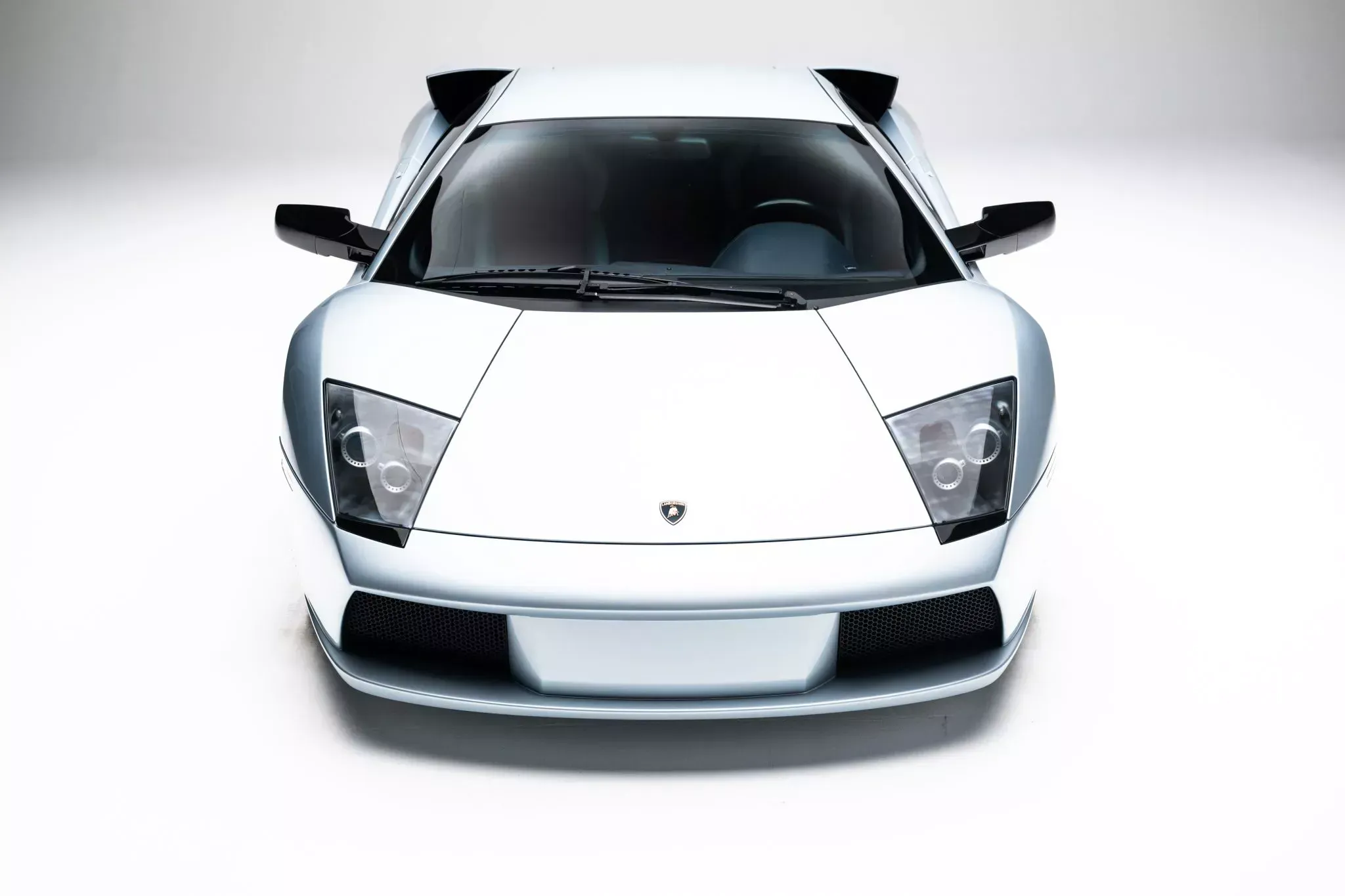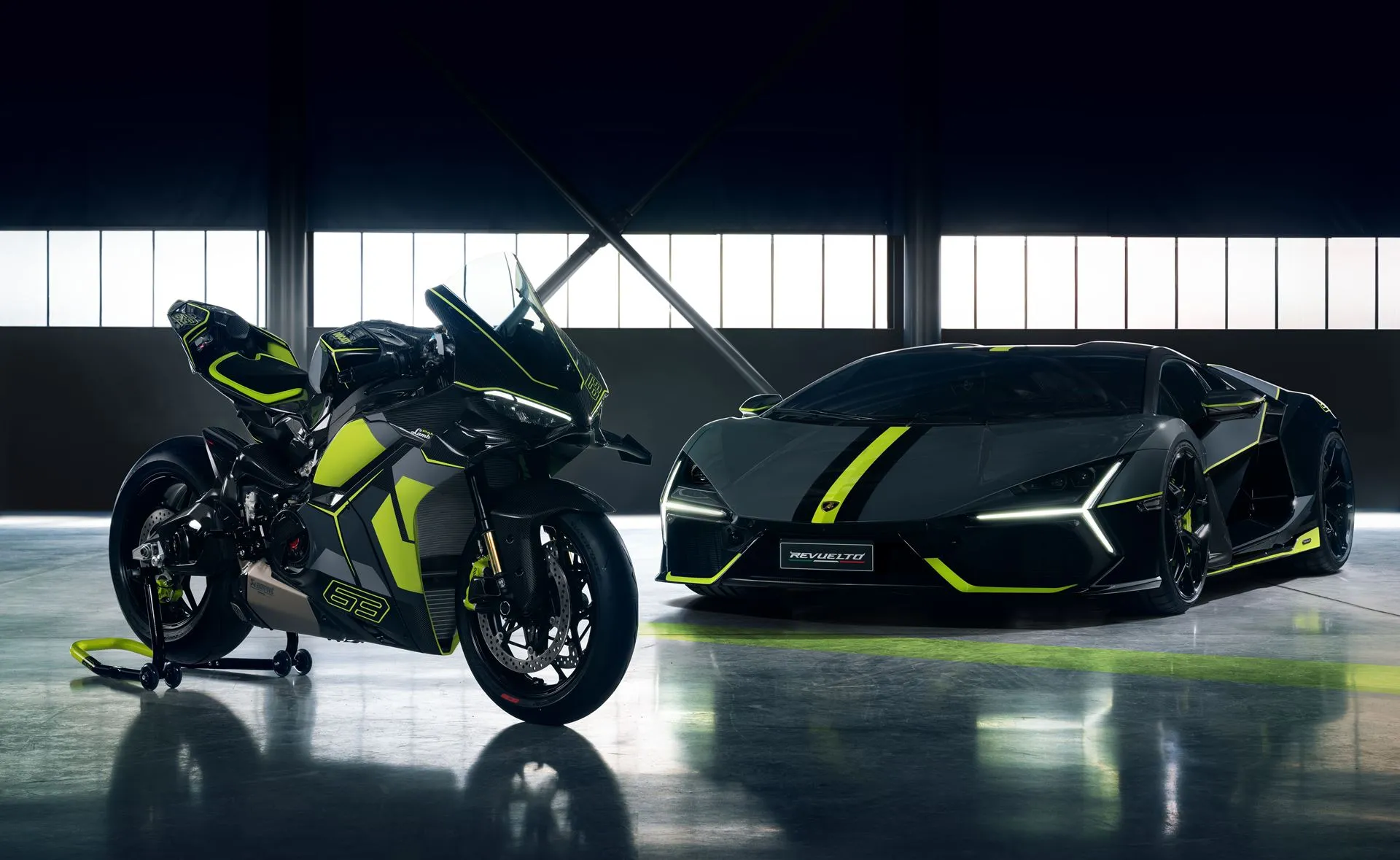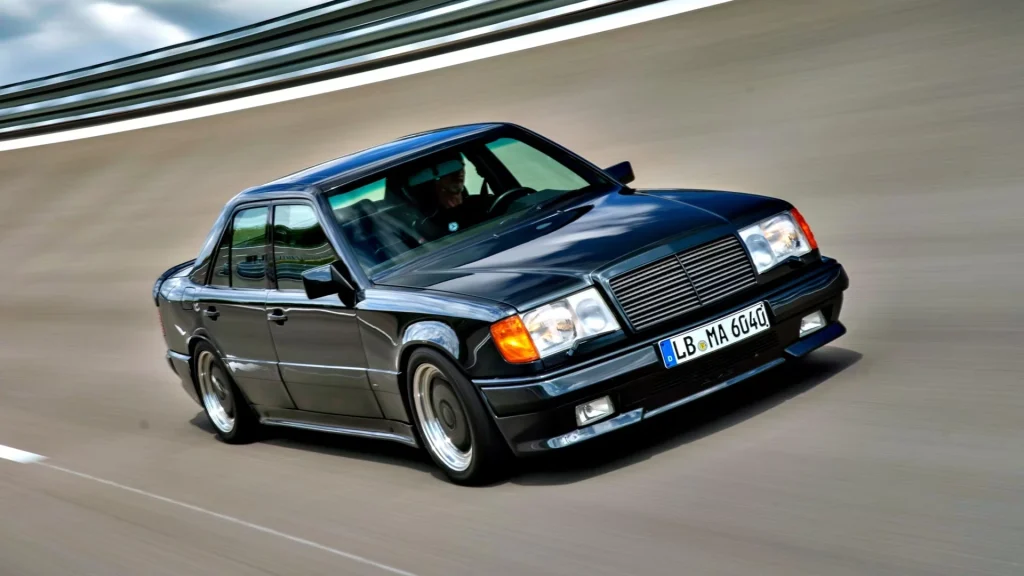907 horsepower and F1 sound? See the exclusive engine details of the LAMBORGHINI TEMERARIO and why it will last over 20 years.
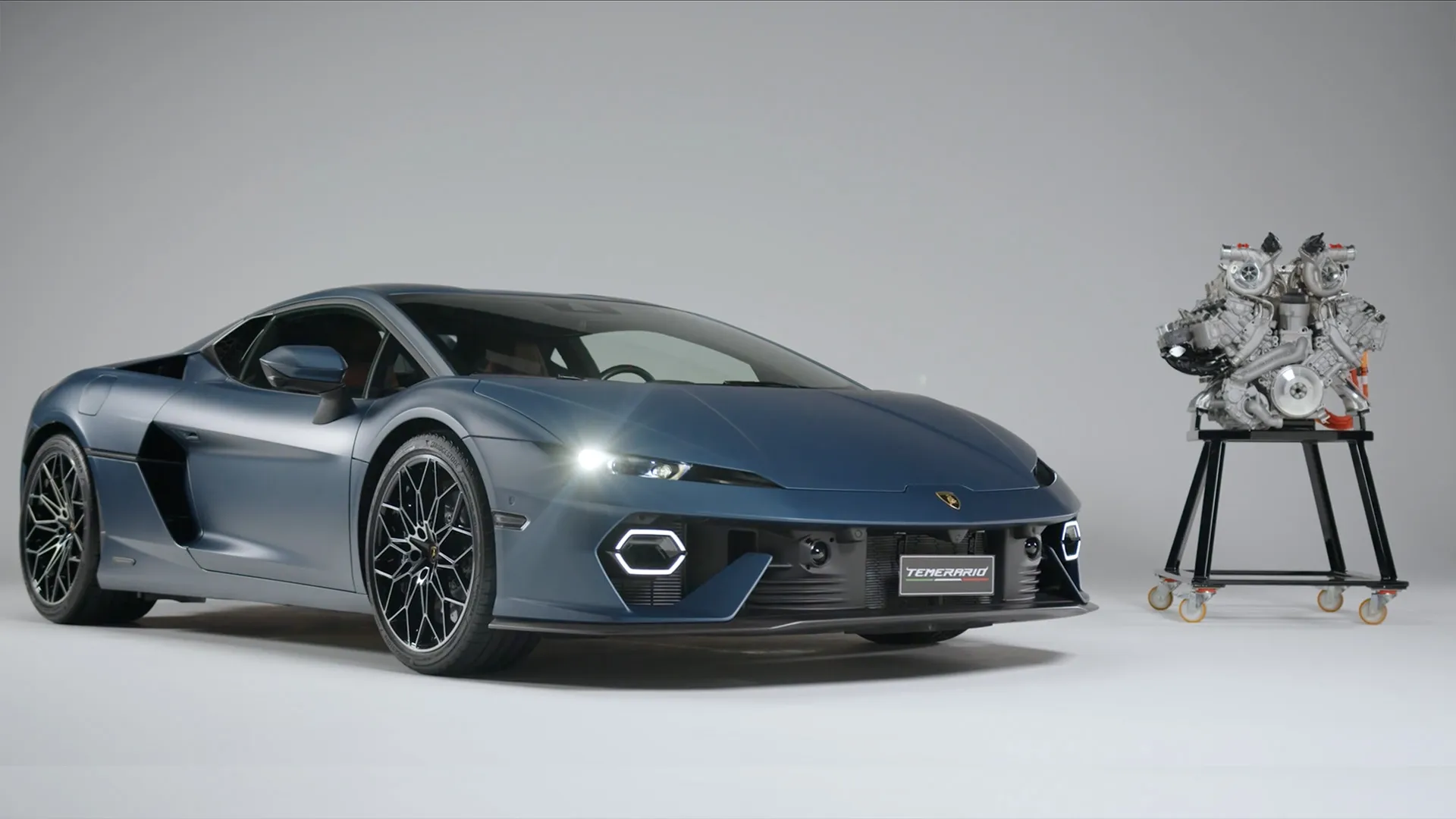
In an era dominated by electrification and the promise of a silent future, Lamborghini is making a bold declaration of war, proving that the visceral soul of a high-revving internal combustion engine not only survives but becomes more extreme than ever.
The 10,000 RPM Revolution: Engineering That Surpasses the V10
The development of the new hybrid twin-turbo V8 engine for the Huracán successor—the anticipated Temerario—was not merely an engineering task; it was a strategic imperative for the Italian brand. As explained by Paolo Racchetti, Product Line Director for the Temerario, the goal was to replace an icon (the naturally aspirated V10) with something that could be even more iconic. The result? A V8 capable of spinning up to an astounding 10,000 revolutions per minute (RPM), an unprecedented feat for a series-production turbocharged engine.
The central technical challenge lay in forcing a turbocharged engine, which naturally produces peak torque at lower RPMs, to sustain the high-frequency performance traditionally reserved for race-spec naturally aspirated engines. The 10,000 RPM target was set as a direct connection point to the world of elite motorsport, ensuring the Temerario’s sonic and sensory experience would be unparalleled.
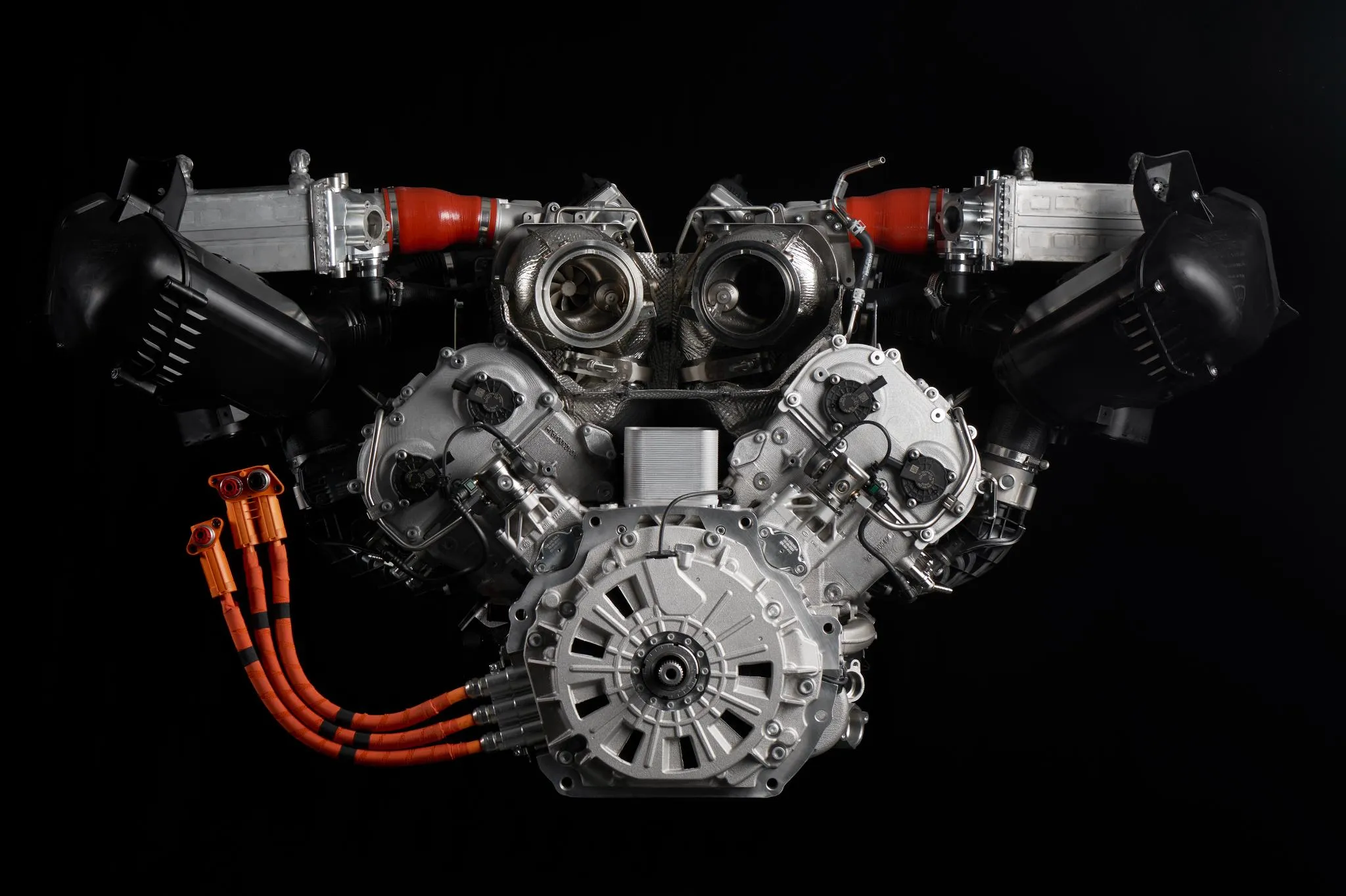
Racing Architecture: The Secret Behind Extreme Revs
For this 4.0-liter V8 to reach and sustain the 10,000 RPM mark with durability and safety, Lamborghini’s engineering team drew solutions directly from the racetrack. Inertia and managing internal stresses are the biggest enemies of high RPMs, leading the brand to implement an arsenal of low-weight, high-strength components:
- Flat-Plane Crankshaft: Essentially, this is the car’s sound signature and throttle response hallmark of a race car. The flat-plane crank architecture (unlike the cross-plane configuration of most American V8s) minimizes rotational mass, allowing the engine to rev almost instantaneously and produce that sharp, aggressive exhaust note.
- Titanium Connecting Rods: Titanium is expensive and complex to machine, but its use in this engine is crucial. At 10,000 RPM, the forces acting on the moving assembly are colossal. The weight reduction provided by the titanium rods drastically relieves mechanical stress, ensuring the integrity of the powertrain under maximum demand.
- Lightweight Machined Pistons: Working in conjunction with the titanium rods, these competition-derived technology pistons reduce overall inertia. This lightness not only improves acceleration but is the reason the engine can achieve RPMs so prohibitive for a twin-turbo.
This pursuit of extreme lightness and strength is similar to what is seen in elite projects, such as the PORSCHE 911 GT3 gaining coilover suspension and carbon aero discs in Manthey’s new performance package. However, the application in a hybrid V8 turbo setup is what makes Lamborghini’s project unique in the market.

Exclusivity and Longevity: An Engine Built for the Future
Lamborghini’s most telling decision is not just the V8’s engineering, but the strategic planning of its lifecycle. This powertrain is not a short-term fix; it is a central pillar designed to define the brand’s identity in the hybrid era.
The Strategy of Defensible Exclusivity
With such a massive investment in materials and development, the V8 engine has been positioned as the Temerario’s “signature.” Director Paolo Racchetti was emphatic: the 10,000 RPM V8 will be exclusive to the Temerario. This usage restriction is deliberate and multifaceted. First, it solidifies the supercar’s identity, offering a value proposition that “no one else is offering.”
Second, there is a real technical barrier. The complex architecture of the V8, optimized for a mid-rear engine layout and an extremely low center of gravity, simply does not fit the Urus SUV without costly redesigns. The involved engineering complexity ensures the engine remains a unique signature, preventing the 10,000 RPM V8 from being adapted to other volume models.
Two-Decade Commitment Against Full Electrification
The most impactful data point for the brand’s future is the planned longevity. Racchetti confirmed that the engine was designed “to remain for at least two life cycles.” Given that the Huracán had a lifespan of about a decade, this implies the new V8 could be the backbone of Lamborghini supercars well into the 2040s.
This long-term vision signals unwavering confidence in the relevance of hybridized high-performance internal combustion, even amidst global regulatory pressure. Lamborghini is betting against the predicted extinction of high-revving engines, contrasting sharply with the rapid adoption of purely electric technologies promising 1,000 km range and fast charging with solid-state batteries.
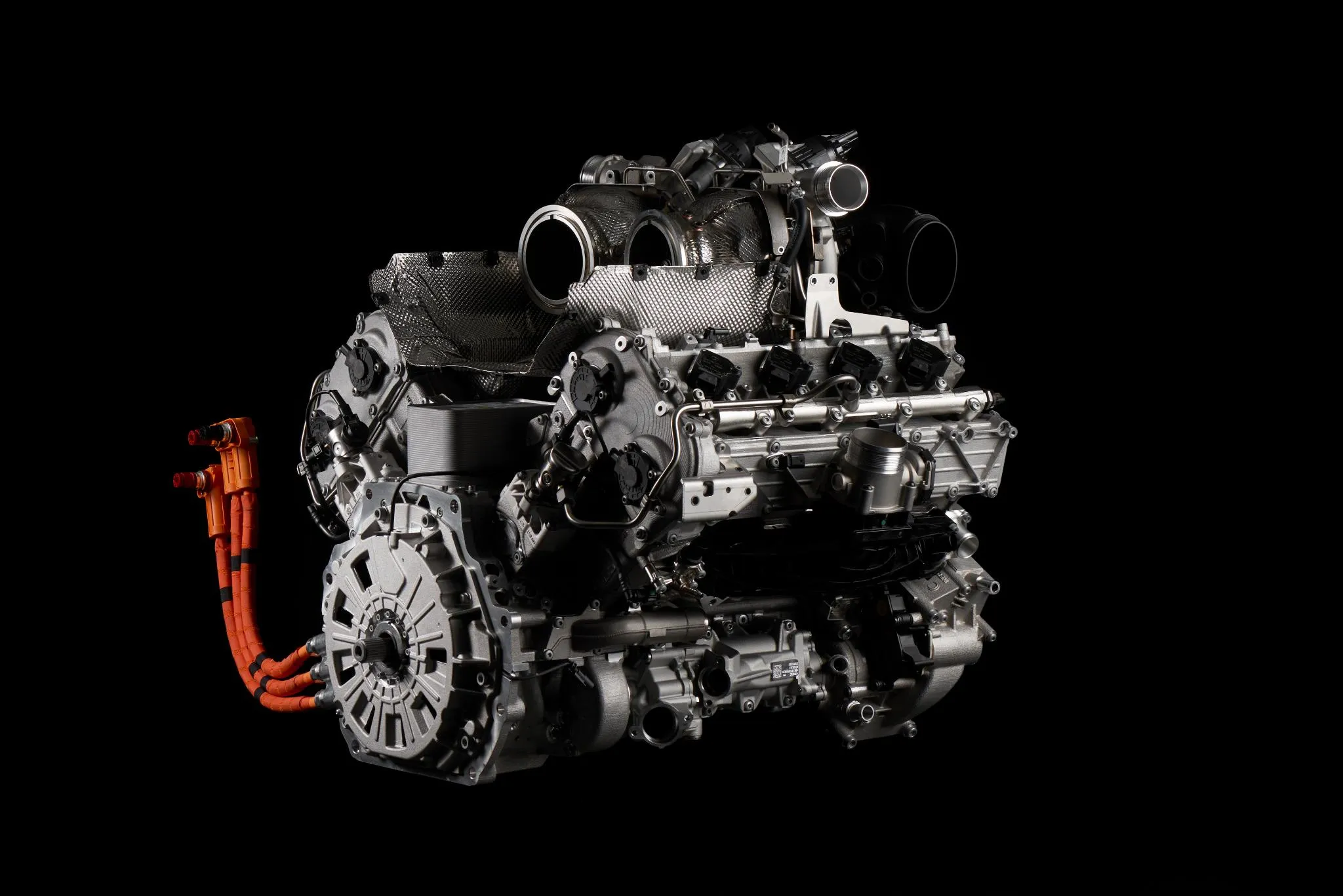
The engine is not static; it is an evolutionary platform. Lamborghini already has a “roadmap for improvements” in place, meaning the powertrain was over-engineered from the start to accommodate future performance upgrades, more radical versions (like a potential Performante), and adaptations to stricter emissions standards. This modularity ensures the brand can maintain the excitement and competitiveness of the Temerario for much longer. Meanwhile, the electric luxury market pushes forward with models like the PORSCHE CAYENNE ELECTRIC 2026: the most powerful SUV ever created by the German brand, but Lamborghini reaffirms the soul of combustion.
The combination of a racing flat-plane crankshaft and exotic materials, resulting in a 10,000 RPM twin-turbo V8, is not just a technical advance; it is a philosophy. Lamborghini is not just building faster cars; it is preserving the raw emotion of driving. This engine, part of a hybrid system delivering 907 horsepower, is proof that the future of extreme performance will be electrified, but never silent. This reminds us of how other automakers seek the essence of high-performance internal combustion, such as with the 383 Stroker Engine: The Chevy Small Block V8 That Redefined Muscle Car Performance.
The Temerario’s V8 solidifies Lamborghini’s position as a guardian of automotive passion. By investing in longevity and exclusivity, the Italian marque ensures that the 10,000 RPM roar will be the defining sound of supercars for decades to come.







